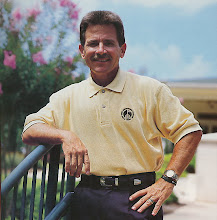Several factors that public & country club golfers may not be aware of concerning Augusta National:
There is no operating budget at Augusta. This does not occur at but a select few private clubs
They spend millions of dollars a year, whatever it takes.
The course is closed from May-October when all other courses are open and under stress
The cutting height of the greens at Augusta may not be lower than we cut our greens. We mow
our greens every day and may double cut and roll the greens to get maximum speed. The
greens at Augusta have enough undulation to generate high end putting speeds, not to mention
that their greens may be mowed as many as 6 to 8 times a day during the even.
Any given putt may have 20 to 40 feet of break to it.!!!!!!!!!!!!!!!
The photo below shows the number of volunteers for the event. Most 18 hole facilities might have a staff of 12 to 25. There are twice that many saff members preparing the bunkers on this single hole
Most 18 hole courses have 2 or 3 fairways mowers. 14 here in the Augusta photo and a few extra in Golf Course Operations in case they are needed.
Who determines the daily cupping locations for The Master event?

NCC's own Assistant Superintendent, John Morris was an Assistant at Augusta for 5 Masters events.















